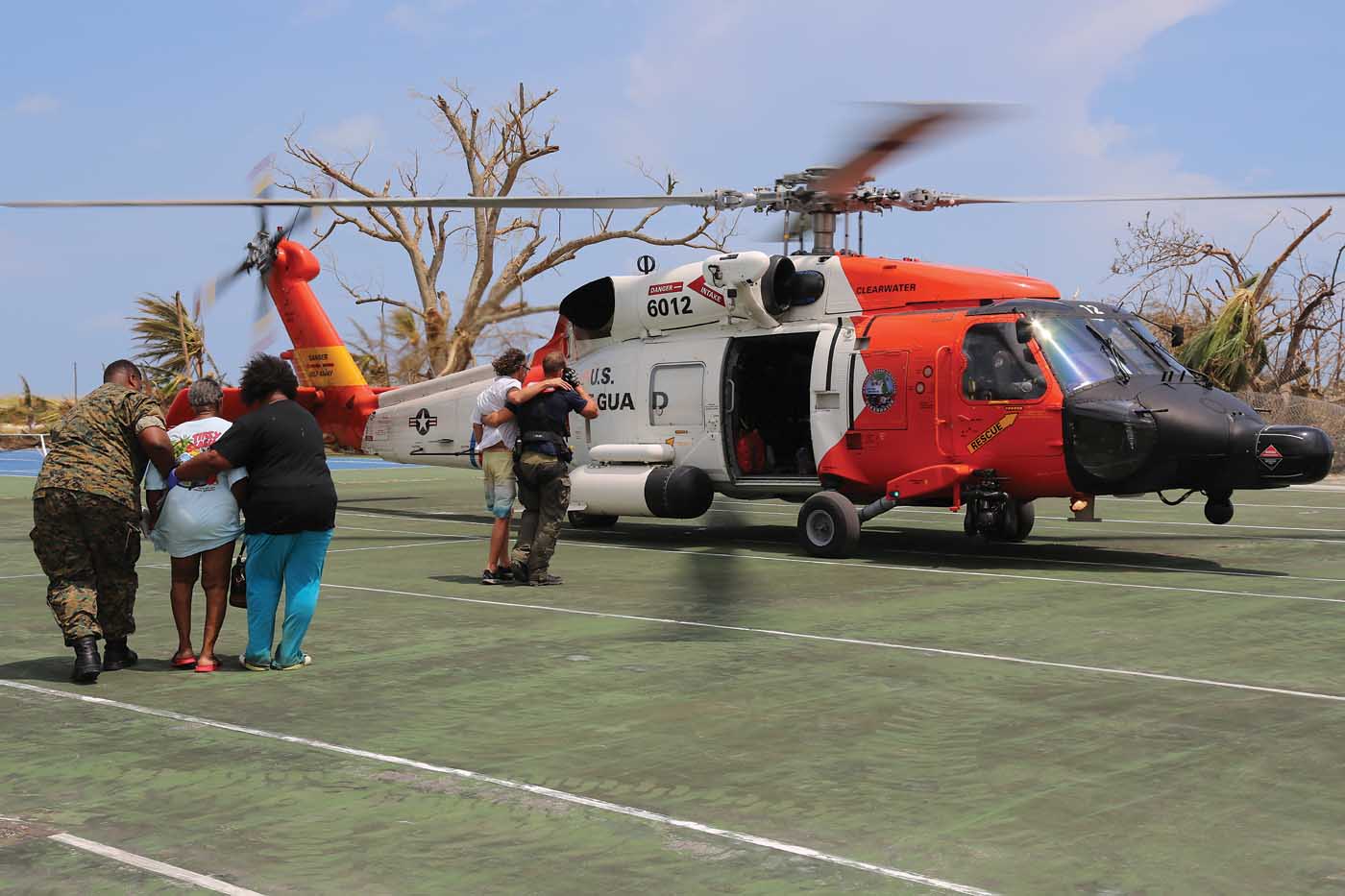On Sept. 3, just a day after Hurricane Dorian caused catastrophic damage to the Bahamas as a record-breaking 185-mph (300-km/h) category five storm, U.S. Coast Guard crew chief Ali Dowell lifted off from the largest of the archipelago’s islands to begin the search for survivors in her Sikorsky MH-60 Jayhawk.
The Coast Guard wasn’t alone above the battered islands. Aside from scores of private pilots who flew to the worst-hit islands without clearance, commercial rescue helicopters were lifting off from Florida, some while the storm’s fringes were still whipping that state.
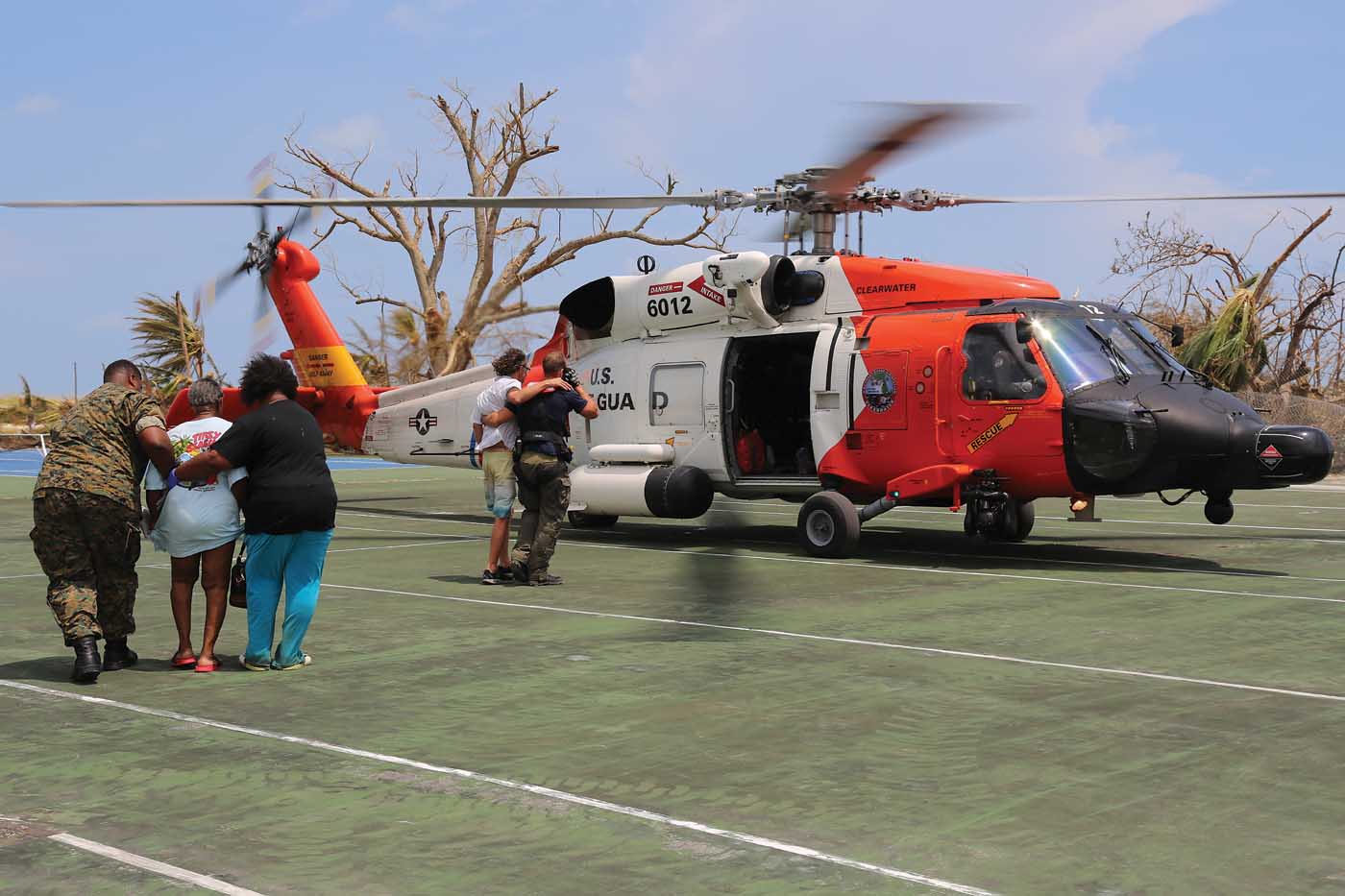
Alex Anduze, a pilot for Brown Helicopters, skirted the southwest edge of Dorian, “basically flying through the outer bands” from Pensacola to pre-stage his UH-60 in Stuart, Florida.
Through Joe Rieger, owner of Blue Marlin Cove Marina in West End, Grand Bahama, Anduze was able to secure written permission from the country’s deputy prime minister to provide immediate direct relief to the affected areas. With that letter in hand, Miami Air Route Traffic Control Center issued them the callsign Relief01, and they were off on the 45-minute hop to the Bahamas.
“The storm wasn’t even completely gone and we were already on the way down,” Anduze told Vertical. “We were there as early as the military and the Coast Guard.”
It took Matt Lowe a little longer to make the crossing from Sarasota, Florida, in his Airbus H225. Air Center sent his helicopter and an Airbus AS332L1 into Nassau, the capital of the Bahamas, two days after the storm passed. Air Center was flying for Global Medical Response, which secured philanthropy dollars to keep the two helicopters airborne for a week of 14-hour days, Lowe said.
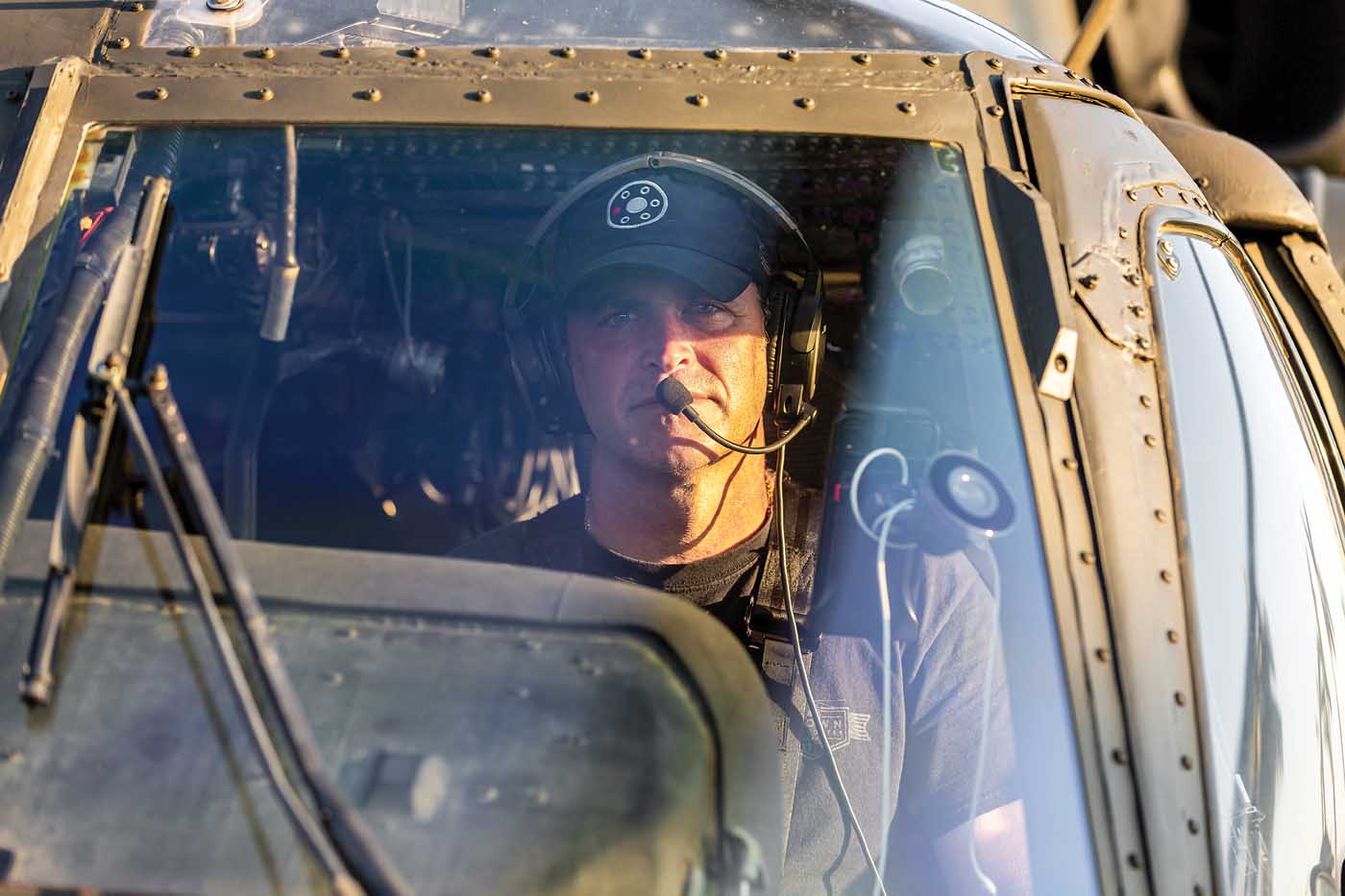
With a contract from the Royal Bahamas Defence Force, Lowe ferried Prime Minister Hubert Minnis and an entourage of 10 to some of the worst hit islands and towns: Great Abaco and Marsh Harbour, Elbow Cay, Green Turtle Cay, Fox Town, Crown Harbor and Freeport.
Dowell and the crews of at least five other U.S. Coast Guard rotorcraft that were pre-staged on Andros – south of the storm’s rampaging path – found plenty of Bahamians in need. By Sept. 9, the U.S. Coast Guard alone had rescued and relocated nearly 400 people from the Abaco chain of islands and Grand Bahama.
When the storm hit, it pushed the ocean in and over the islands in its path, with the storm surge reaching the second floor of many buildings. Entire shanty towns where Haitian immigrants had settled were simply swept out to sea. Thousands remain missing.
“We saw everything from amputations to pregnant women very far along who needed to get out to Nassau,” Dowell, a Coast Guard avionics electrical technician and flight mechanic, told Vertical. “There were a lot of fracture injuries. In Marsh Harbour, everything is just gone.”
What helicopter crews found in the areas pounded the hardest by the storm’s 220-mile-per-hour gusts has been described as “hell.” Photos from the air show entire houses flipped on their side, boats piled like toys on land, and entire towns reduced to twisted stacks of waterlogged building materials. The bodies of drowning victims lay among the rubble. The salty air coveted by the tourists who are the lifeblood of the islands was thick with the smell of death, Lowe said.
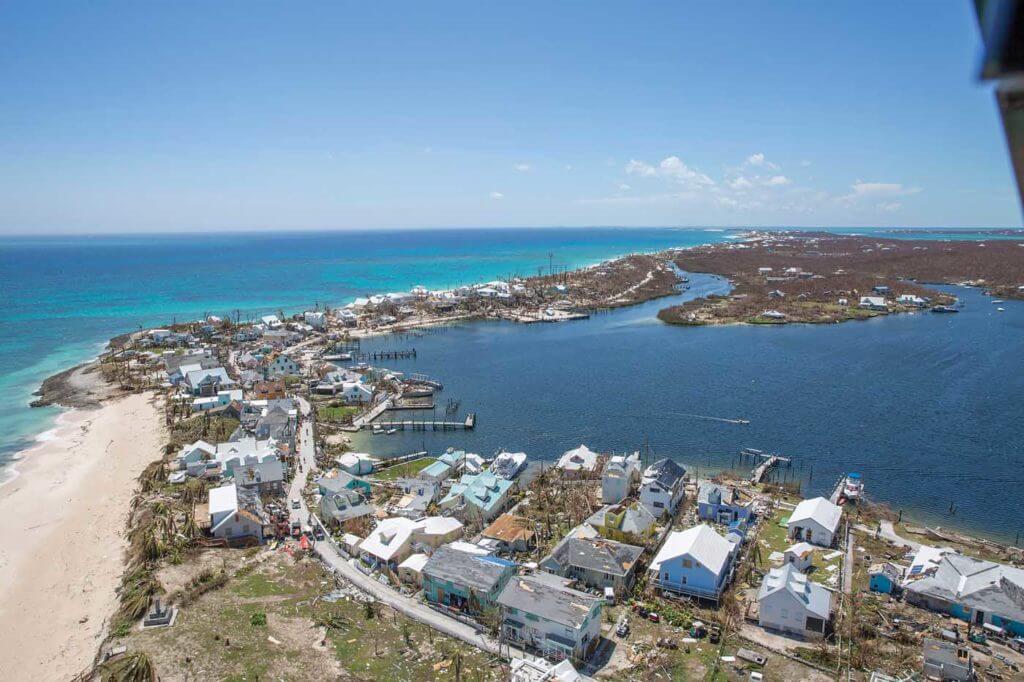
“Elbow Cay broke my heart,” Lowe wrote in a text. “We landed on a field near the pool. We could smell the decomposing flesh. I spent 8 combat tours in Iraq/Afghanistan … [This was] worse than anything I had ever seen.”
Elbow Cay is home to the iconic candy-striped Elbow Reef Lighthouse, one of the most photographed lighthouses in the world and the last to run on a hand-lit kerosene Coleman wick. It survived the storm with minimal damage, but stayed unlit for 10 days. It was also one of the first places Dowell and her crew began their search-and-rescue (SAR) operations.
Dowell was speaking in the back of a Coast Guard Lockheed C-130, which had been sent to swap out fatigued helicopter crews so the incoming personnel could continue the work of rescuing Dorian-effected Bahamians from islands that lacked room for airplanes to land or where the tarmacs were wrecked.
She had been flying as an MH-60 crew chief and hoist operator six to eight hours a day for nearly a week when the C-130 picked her and a dozen other helicopter crews up.
Navigating through packed airspace
With 700 islands spread throughout 180,000 square miles of bright blue ocean, it’s difficult to imagine the airspace over the Bahamas becoming crowded, but so many U.S. military, government, private and other aircraft flew to the rescue following the hurricane that airspace became precious.

Grand Bahama International Airport (MYGF), Treasure Cay Airport (MYAT), and Leonard M. Thompson International Airport (MYAM) at Marsh Harbour quickly became overwhelmed and were operating with limited or no air traffic control. The Federal Aviation Administration (FAA) assisted and put a temporary flight restriction over Grand Bahama.
In the initial aftermath, the glut of supplies and aircraft kept even military aircraft grounded at times. The Coast Guard’s C-130H, packed with food and medical supplies and crews for the MH-60 helicopters stationed on Andros island, was delayed more than an hour in Nassau on the return leg to Florida Sept. 7.
“Probably our biggest problem was airspace deconfliction,” Dowell said. “At first there were a lot of folks with private aircraft coming in to help and planes just trying to get footage.”
Lowe said the volume of authorized and illegal traffic in the skies was such that it had delayed Air Center’s clearance to fly into Nassau from Florida.
“The biggest challenge we had was that civil aviation of the Bahamas was overwhelmed with illegal civilian traffic,” Lowe said. “It took us two days to get in there. … It was like a hotspot for everybody breaking every rule that they possibly could.”
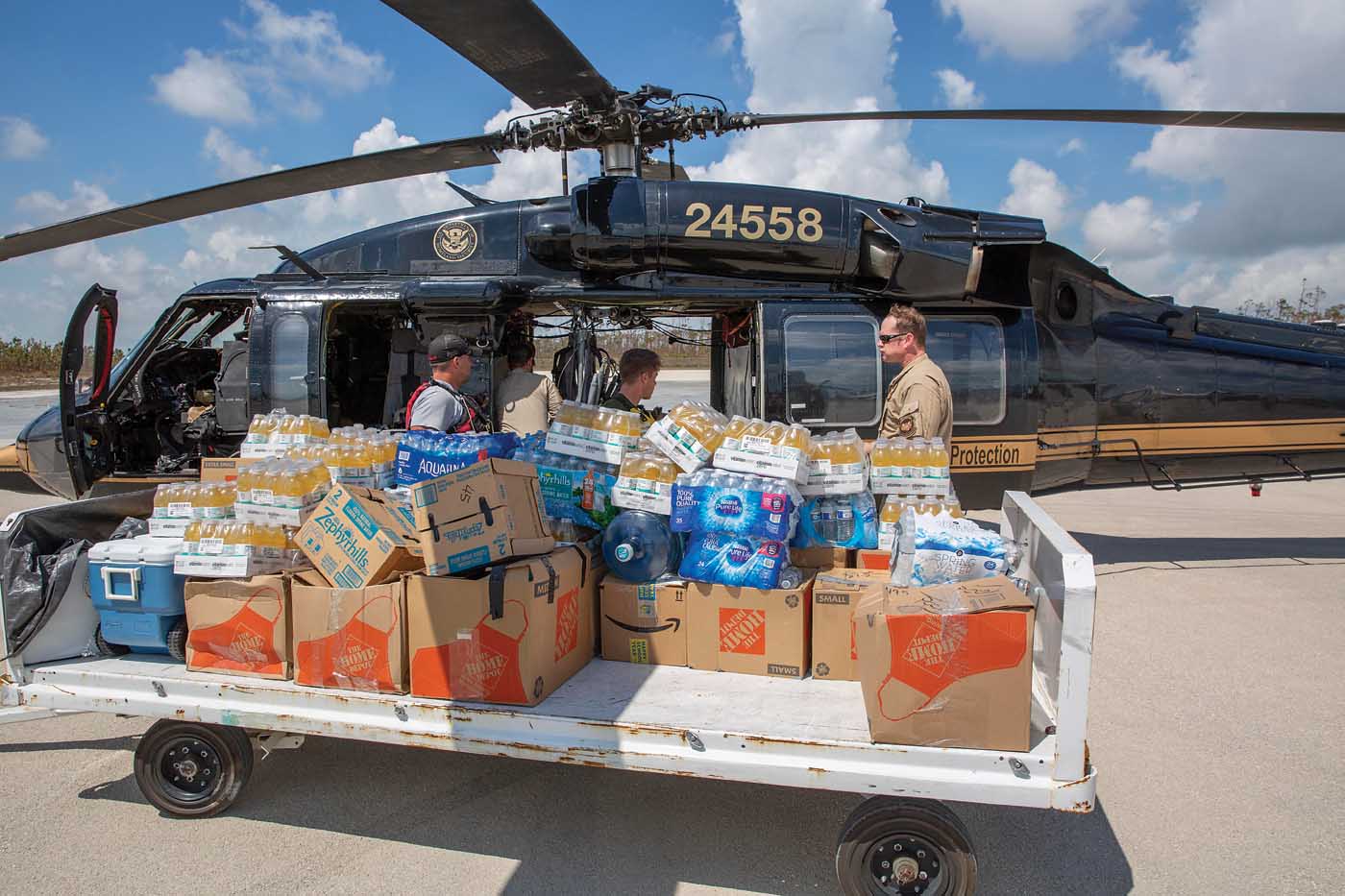
CBP photo by Kris Groagn
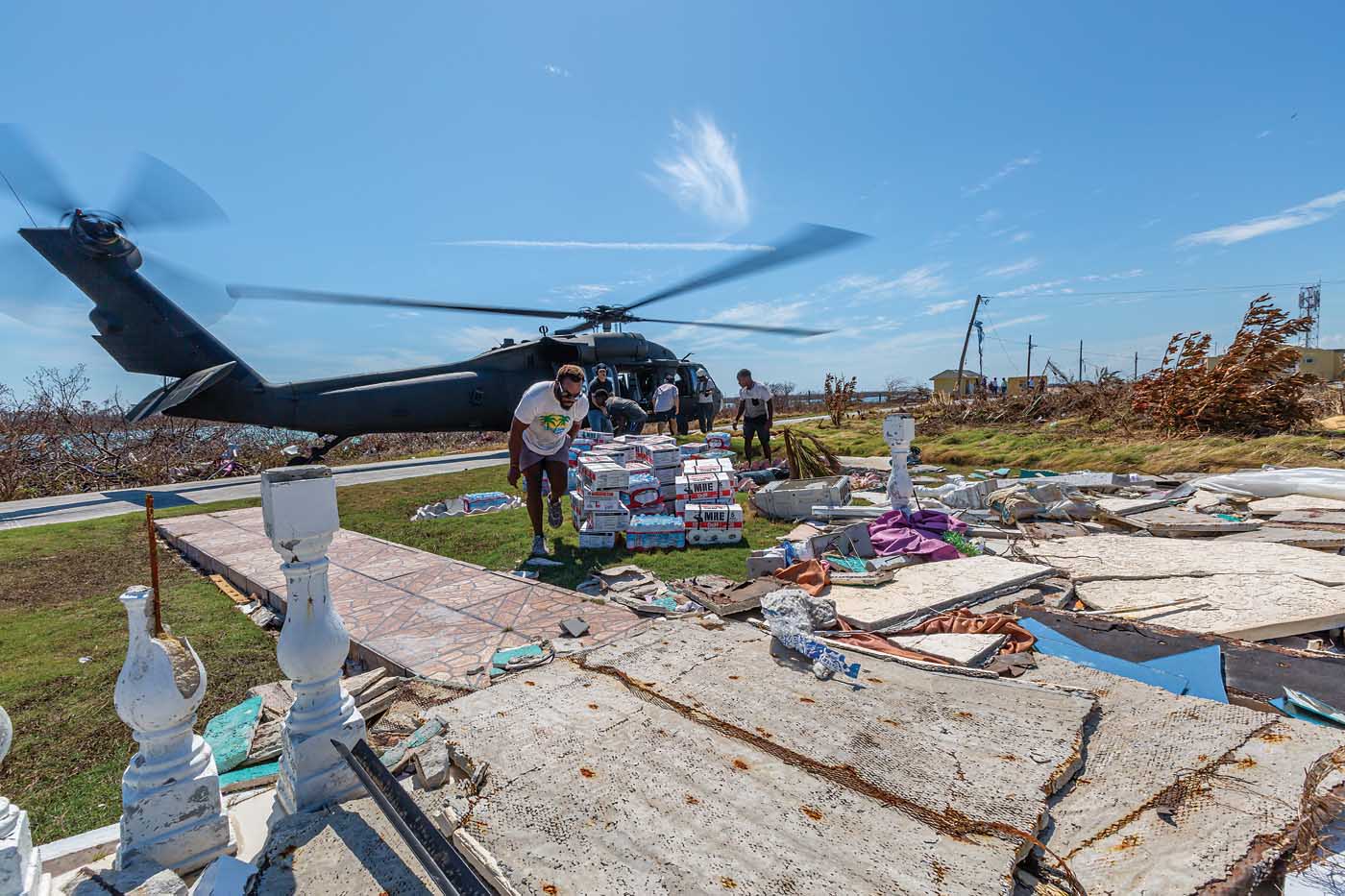
Complicating the matter, many of the areas most in need were on small islands with no airport. In some cases, residents had to wait more than a week for supplies or evacuation. The international airport in Marsh Harbor was washed over for days. Even boats with supplies couldn’t risk pulling into ports clogged with sunken debris. Helicopters were the only way in or out.
Anduze, with his Relief01 callsign and clearance directly from the deputy prime minister was luckier in gaining access. Having launched while Dorian was still licking Florida, he flew 21 round-trip missions from Stuart Jet Center, a total of 50 flight hours, over the next eight days. All told, he moved between 80,000 and 100,000 pounds of relief supplies from Florida to the Bahamas. The flight time was donated by Brown Helicopter, Anduze said, while fuel was donated to the Stuart Jet Center from all over the country.
“We concentrated on locations where nobody else could go, where only a helicopter could get,” he said. “A lot of people were going into Freeport on Grand Bahama, but we decided that our efforts were going to be concentrated on the outer islands.”
Without working airfields, the various relief and rescue helicopters were landing wherever they could: tennis courts, basketball courts, playgrounds, roads and golf courses. Sometimes they had to hover while tennis nets were cut down or debris was cleared from another impromptu landing pad, but the local residents recognized the helicopters as saviors and often instinctively turned out to help them land, Anduze said.

After obliging the Prime Minister’s tour of Dorian’s wrath, Lowe’s H225 began “freelancing,” as he called it, hauling cargo and fuel to wherever it was needed. He hauled 5,000 pounds of food and water at a time, carried 250-pound generators, or more than a dozen passengers. The Super Puma’s versatility was key, he said.
“The big thing is how quickly we could do a configuration change,” he said. “We could carry 18 passengers, land, pull the seats out and replace it with eight seats and cargo, or completely empty it out and fill it with large oversize items like water jugs.”
In medevac configuration, the H225 could carry three stretchers on each side and have a flight surgeon care for them en route to an operational medical facility, he said. They rescued elderly patients with dementia from one island, and a mentally unstable man at gunpoint — they carried security personnel on some missions — from another.
“Some of those folks hadn’t seen any help for 10 days,” Lowe said.
Managing in the
immediate aftermath
Commander Keith Blair had been chief of Coast Guard air operations for five days when he spoke with Vertical on Sept. 7. The Coast Guard said it had five MH-60s operating from Andros. Blair said another two joined from Mobile, Alabama. Two Customs and Border Patrol helicopters made for nine total operating from the island, he said.
Those forces were operating in concert with the Bahamas National Emergency Management Agency and the Royal Bahamas Defence Force.
“It was pretty impressive because we were sending out two waves a day, taking off at about 6:30 [a.m.] or so, and our folks were going out and they were doing fantastic,” Blair said. “Most of our business the first day was going up to find the edge of the storm and then figuring out where we could go and then from there, they started to find concentrations of people.”
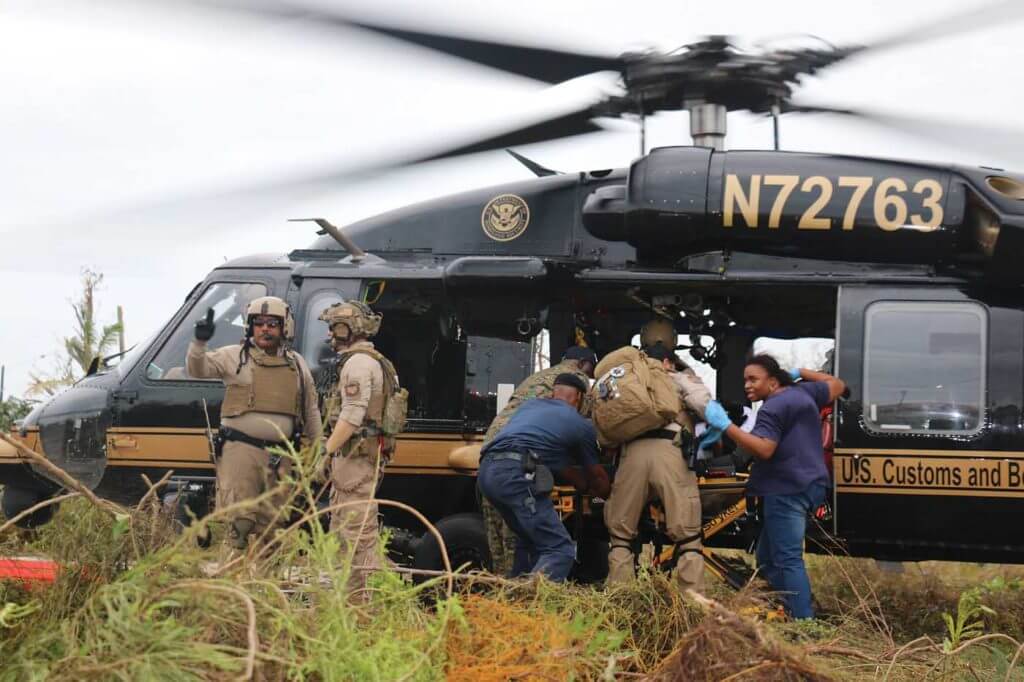
As vast as the Bahamas territory is, rescue operations focused on two main islands – Great Abaco and Grand Bahama. Freeport on Grand Bahama apparently suffered mainly flooding damage, while Abaco was devastated by both wind and waves
“We were very surprised to see how intact Freeport was,” Blair said. “One of our pilots described it as St. Petersburg, [Florida,] after [Hurricane] Irma. A lot of it was dry – there was definitely flooding – but the hospital over there wasn’t too busy. Overall they were in pretty good shape. The farther east you got is where there was a lot more damage in remote areas.”
Marsh Harbour’s medical clinic provided a lot of work for the SAR crews as they continuously flew a triangular pattern in the hurricane’s wake. From Andros, crews would fly to Freeport then to Abaco, which aside from its main island has dozens of remote communities on outlying islands like Man O’ War Cay, Elbow Cay, Treasure Cay, and Great Guana Cay.
Flying that triangle quickly became difficult due to the packed skies, which in the immediate aftermath were also filled with dozens of news organizations, in addition to the government, military, and private relief aircraft.

The airspace will open the further the storm recedes into recent memory and philanthropic enthusiasm fades, as it does after any natural disaster, Lowe said. The wounded islands and the Bahamians on them will need help removing debris and rebuilding infrastructure for months, if not years. Helicopters are ideally suited to the work, if funding to operate them is available. Trouble is, that money will almost certainly have to come from outside the Bahamas, he said.
“The Bahamas is not a wealthy country,” Lowe said. “There are a lot of wealthy people who live there, but the country itself is not wealthy. You’re going to need heavy-lift helicopters in there moving poles and heavy equipment because the harbors are still closed. We’re looking at potentially six-month contracts, but we need NGOs and the U.N. and whoever else to throw a bunch of money at it. Unfortunately, I don’t see anybody bailing the Bahamas out right now.”





